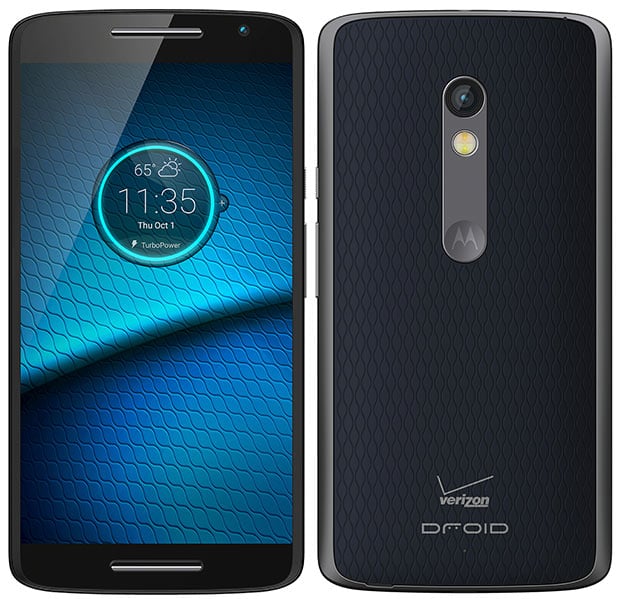Motorola Droid Turbo 2 And Droid Maxx 2 Review: Shatterproof And Value Android
Whereas the Moto X Pure Edition isn’t carrier-specific, the Turbo 2 and Maxx 2 are part of the Verizon Droid line. The Turbo 2, which starts at $624, has higher-end hardware than the Maxx 2 and features Motorola’s new ShatterShield display, which is bound to appeal to anyone who has lost a phone to clumsiness. However, with a starting retail price of $384, the Maxx 2 is significantly cheaper, so if it can handle mainstream tasks and games adequately, there are plenty of customers who will be willing to overlook the lack of a shatterproof screen, something that virtually no other manufacturer can lay claim to currently
|
DROID Turbo 2 Operating System System Architecture/Processor Memory (RAM) Storage (ROM) Dimensions Weight Display Battery Water Protection Networks Bands SIM Card Wi-Fi Bluetooth Technology Rear Camera Front Camera Connectivity Speakers/Microphones Video Capture NFC Location Services Sensors |
DROID Maxx 2 Operating System System Architecture/Processor Memory (RAM) Storage Dimensions Weight Display Battery Water Repellent Networks Bands (by model) SIM Card Rear Camera Front Camera Connectivity Bluetooth Technology Wi-Fi Speaker Video Capture NFC Location Services |
There is a lot to like about the Droid Turbo 2’s hardware. The phone features a Qaulcomm Snapdragon 810 processor @2GHz and 3GB of LPDDR4 memory, which should give you plenty of power for running multiple browser tabs and other tasks that might throw off an underpowered device. Storage starts at 32GB, which isn’t particularly impressive, but you can bump the price from $624 to $720 for a model that features 64GB of onboard memory. Either way, you’ll have the option to improve the phone’s storage via the microSD card slot, which supports cards up to 2TB. The Droid Turbo 2 also sports the latest 802.11a/b/g/n/ac support and Bluetooth 4.1 LTE. The phone also has a solid 21MP rear camera and a 5MP front camera that boasts a wide-angle lens for better selfies. (We cover the cameras in more detail later in the review).
The Droid’s 5.4-inch AMOLED display features a resolution of 2560 x 1440 at 540ppi. Where the Moto X Pure Edition and Droid Maxx 2 have Corning Gorilla Glass 3 screens, the Droid Turbo 2 features the Moto ShatterShield, which is designed to withstand that gut-clenching moment when your phone slips from your fingers and lands on concrete. The best way to make a claim like this is to prove and put your money where your mouth is – and Motorola is doing both. The company demonstrated a phone-drop with a cement block at launch and is backing the ShatterShield with a four-year guarantee.

The Moto DROID Maxx 2
The Droid Maxx 2 has pared-down hardware compared to the Droid Turbo 2 and is fairly similar to the Moto X Play. The 1.7GHz Qualcomm Snapdragon 615 packs a lighter punch than the Turbo 2’s 810 and the Adreno 405 graphics won’t keep up with the Turbo 2’s Adreno 430.
The phone includes 2GB of RAM, which is tolerable, but comes up short in the storage department with just 16GB of internal storage. On the upside, the phone has a microSD card slot for up 128GB of extra storage.
The Droid Maxx 2’s display is a 5.5-inch 1080p screen at 403ppi. It doesn’t have the ShatterShield that the Droid Turbo 2 sports, but its Corning Gorilla Glass 3 is likely to be tough enough for the day-to-day bumps. The phone has 802.11a/b/g/n and Bluetooth 4.0, in addition to 4G LTE and related cellular connectivity.
Motorola makes bold claims about the battery life of both phones, which we’ll get to in a bit. For now, let’s take a close-up look at Motorola’s newest smartphones.







